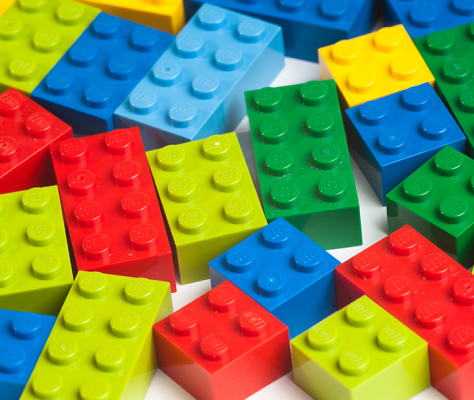In recent months, the phrases “low-code” and “no-code” have popped up quite regularly. While they may seem like buzzwords — their usage dates back to 2011 and even as far back as the 90’s. For example, IBM’s GUI-assisted programming platform VisualAge for BASIC. In this blog, we’ll examine what low-code/no-code means today and how they assist in an organization’s digital transformation journey.
What is low-code/no-code?
Low-code/no-code solutions address a specific need. They allow citizen developers (a Gartner term first used around 2009) to drag and drop icons that represent applications onto a canvas; afterward, a “click-and-configure” paradigm is used to connect these icons to the corresponding applications. The result is that one can rapidly build a business application with little or no coding required (hence the names “low-code” and “no-code”). These applications execute on top of a runtime environment provided by the underlying platform, meaning they also get platform-specific capabilities with little or no explicit configuration changes required.
How do they support digital transformation?
Because application development organizations (ADOs) often follow traditional, complex software development processes, they are typically resource-constrained due to the amount of effort required to build a single application. Coupled with the frequency of inbound requests by the lines of business, there is often a backlog of work to be completed, which represents a fairly significant bottleneck. Low-code/no-code platforms allow a company to bypass much of this by not requiring the involvement of an ADO to fulfill a business request or build a new application. This strongly supports the process of transforming a company to meet changing business and market requirements — the definition of digital transformation.
Creating new processes, or modifying existing processes, requires access to the various systems in place to facilitate these types of changes. Most companies, however, have a variety of systems both new and old, which can often come from growth due to M&A; not upgrading existing systems to keep pace with new releases; and more. This significantly increases the difficulty to create new or modify existing processes to meet changing business and market requirements because, without integrating them, these segregated systems and the associated data silos prevent a company from making fully-informed business decisions.
Data is the key to transforming
The key to creating new or modifying existing business processes and customer experiences (CX) is not in accessing the systems in place – instead, it is in unlocking the value of the data that a company has. In 2015, Cap Gemini conducted a study that discussed the impact of data on businesses. Some interesting numbers were postulated in that study:
- 64% of respondents said that big data is changing traditional business boundaries and enabling non-traditional providers to move into their industry.
- 65% of respondents see big data as a key enabler of their organization’s effectiveness/competitiveness.
- 63% consider that the monetization of data could eventually become as valuable to their organizations as their existing products and services.
Think for a minute what life would be like if Amazon did not suggest products that you may be interested in based on purchases you have made in the past or even products that you have viewed but did not purchase? Or how much more effort would be required to find content to read if Flipboard did not suggest new topical categories based on news articles you have read previously?
Data is the real value of an organization because it drives a superior CX, which ultimately results in a net-positive impact on top-line revenue.
Integration unlocks the power of data
It is not just the raw data, though, that drives new and innovative ways of interacting with your end-users. Instead, it is how that data is combined and manipulated, allowing an organization to make strategic decisions using insights gained by these new views into the data that is in its possession. There are real challenges in getting access to the data — however, solutions may use proprietary protocols and data formats or are simply non-trivial in the amount of effort required to extract the data.
Consider, for example, SAP systems that use BAPI as the protocol and iDoc as the data format. If you ask a room of 100 random developers how many could extract a product status from such a system, you may get a few hands raised. These few developers would be a bottleneck to an ADO because any applications that require access to SAP would also require that the development team put in a request to those subject matter experts to complete the integration.
How does an iPaaS differ from low-code/no-code?
This brings us to the point of this article: what is an iPaaS and how is it different from low-code/no-code? MuleSoft defines an iPaaS as a platform for building and deploying integrations within the cloud and between the cloud and enterprise. Combining this definition with that of digital transformation, an iPaaS allows you to access multiple systems regardless of location, extract their data, and combine it in ways that enable the creation/modification of new and existing processes. Contrast this with our description of what low-code/no-code does at the beginning of this article and the differences start to come into focus.
Let’s delve into what an iPaaS does a little further.
Capabilities of a good iPaaS platform
An iPaaS solution must provide certain capabilities to access, extract, and combine, as stated in the last section. Let us look at those capabilities, below:
- Integration with a variety of non-trivial systems: It should be no surprise that the primary capability of any integration platform is to connect multiple systems, especially the non-trivial ones like ERP, HRIS, financial systems, etc.
- Self-documenting processes: Using a graphically-oriented drag-and-drop paradigm creates a process that is self-documenting, which reduces the maintenance burden and ultimately the TCO.
- Ease of consumption: Allowing others to easily consume new integrations that we have developed eliminates the constraint of having a few subject matter experts that are responsible for developing all of the interfaces to specific systems.
- Governance: Fully integrated API management capabilities are critical as they prevent information security from being an afterthought and reduce the total operational risk to the business.
Non-functional capabilities
Those are the primary capabilities, but why stop there? Other, non-functional capabilities are also things to consider when looking at an iPaaS.
- Infrastructure management: An iPaaS platform should manage the underlying infrastructure for the new processes that it will host.
- Monitoring and scalability. If the iPaaS platform is in the best position to understand what is happening within itself it should provide monitoring, alerting, and the ability to scale up or down the computational resources required to run those processes.
- Discoverability and re-use: Reuse is only achieved when it’s easy to discover what has been created. This is accomplished by providing a repository where assets can be stored and are tightly coupled with the rest of the “integration building” process.
Summary
In summary, low-code/no-code solutions provide great capabilities to allow the Citizen Developer to quickly create new applications that meet a variety of needs. We have also differentiated these from an iPaaS platform by examining the different goals for both categories of solutions. We have seen how this can impact a company’s ability to transform itself so that it is providing better CX and generating additional revenue as a result. And we have described a set of core capabilities that any iPaaS enables you to effect this transformation to a spectacular result.
For more information about MuleSoft’s iPaaS platform, watch this introductory video about Anypoint Platform and then sign up for free to try it out yourself.









